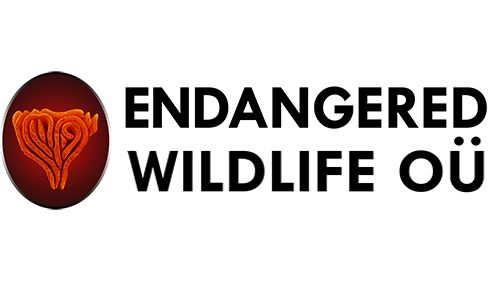How to make the interests of Mother Nature and business congruent? How to walk delicately on the fragile – and, well, sometimes obscure – line in evaluating biodiversity financially? And after all, is it ‘fair’ to put a price-tag on the immense variety of species, some of which come in leaps and bounds, while others are scarce or nearly extinct?
As businesses directly impact biodiversity through their operations and supply chains, assessing their impact on biodiversity and – still a new thing to many – providing financial biodiversity valuation has never been so key.
In a webinar hosted by Shana Gavron, the CEO of Endangered Wildlife OU, a Tallinn-based tech for good fintech specialised in the valuation of biodiversity, both she and Vicki Benjamin, co-founder and CEO of Karner Blue Capital, an SEC registered investment adviser dedicated to investing in biodiversity protection and environmental stewardship, delved into the issues.
The concept of values-based investing is not new, both presenters agreed, however, incorporating the treatment of animals and biodiversity into the traditional set of “values” is a less conventional approach, requiring investor education and a longer pathway to investment.
“Why should we care about biodiversity and, specifically, about its evaluation financially?” Shana Gavron, who in her presentation zeroed in on biodiversity valuation in the fishing industry on the British Colombian coast in Canada, started off with the rhetoric remark.
“The answer is simple: we all need food, but the world is facing a dire situation. It is estimated that today approximately 690 million people worldwide are hungry or close to being hungry. And the number is expected to increase to 840 million people by 2030, thus becoming a global emergency that needs to be addressed without delay,” Shana Gavron emphasised.
“The sad fact is that in order to feed the population more biodiversity needs to be extracted,” she said.
Humans’ dependency on fish as sustenance is continuingly growing, but, alas, not without a toll to the species.
“Since 1961, the growth of fish consumption has nearly doubled in comparison with the population growth, meaning that the rate of (fish) consumption is, effectively, unsustainable extraction of the oceans’ natural resources. Specifically, over the last six years, fish consumption has jumped from 9 kg to approximately 30 kg per capita,” the Endangered Wildlife CEO underlined.
Sadly, most human economic activity undercuts the sustainability of nature by altering how land and oceans are used and by exacerbating climate change, pollution, animal exploitation, and the spread of invasive non-native species. Hence, the importance of sustainability and financial valuation of biodiversity.
Agreeing, Vicki Benjamin, who in her presentation focused on food socio-economics and identifying leaders of public companies investing in capital markets, called biodiversity ‘really foundational’ to the health of an economic system.
“On average, 50 percent of global GDP is virtually dependent on biodiversity,” the Karner Blue Capital co-founder said.
Founded in 2017, Karner Blue Capital has focused on 16 high (biodiversity) impact industries encompassing 389 companies.
“What we basically did was move them in our proprietary models, which helped assess them and keep their performance indicators relative to their industry (agriculture) and relative to the drivers of biodiversity, as well as see if they are a good fit, in long-term, short-term and in intermediary term, for financial outperformance,” Vicki Benjamin said, admitting that the task has not been easy.
“We haven’t been able to determine how to evaluate them on their actual impacts, although Karner Blue Capital has been using exhaustive, cutting-edge readings of the available information and consulting various experts, at UN too,” she said. “Only those exceeding the industry mean are moved to financial analysis…This process takes a long time.”
The Karner Blue Capital executive cited the findings of the 2020 World Economic Forum, which said that three socio-economic production and consumption systems — food, infrastructure, and energy — are responsible for the largest pressures on biodiversity.
“In fact, approximately 80 percent of threatened and near-threatened species are currently endangered by these three systems with the impacts from food, land, and ocean use posing by far the greatest biodiversity threat,” Vicki Benjamin said.
Sadly, it is estimated that, since the dawn of civilization, humanity has eradicated 83 percent of wild mammals, 80 percent of marine animals, 50 percent of plants, and 15 percent of fish as a result of human progress and business innovation.
Through investment in solution-oriented companies operating in these three socio-economic systems, investors can help transform individual industries, build a more robust global economy and, ultimately, ensure the vitality of our planet.
“Therefore, the urgency for all of us is to look to the business community to identify and implement solutions that will help reverse the planet’s biodiversity loss,” Vicki Benjamin said.
In what could be a gleam of hope, Shana Gavron, of Endangered Wildlife, noted that in all industries – and the fishing industry is not an exception, methods of biodiversity extraction are slowly but steadily becoming more ‘humane’ and the understanding of the irreversible impact of biodiversity’s maltreatment is becoming omnipresent, meaning that more and more investors are willing to integrate biodiversity impacts and dependencies into their investment decision-making by accurately assessing the related risks, evaluating the efforts companies are making to manage those risks, and identifying new nature-forward business opportunities.
By 2030, nature-positive business opportunities within the three socio-economic systems previously noted could be worth more than $10 trillion dollars and create 395 million jobs, states Karner Blue Capital.
If all goes well, cooperation between Endangered Wildlife and Karner Blue Capital may give some exciting fruits soon.
“Shana Gavron’s experience is truly transformative and unique in valuating biodiversity…Hopefully, we will soon be working on a project that will combine my policies with her impacts and show something very unique and provocative (how biodiversity can be measured) to the world,” Vicki Benjamin, of Karner Blue Capital, hinted.

